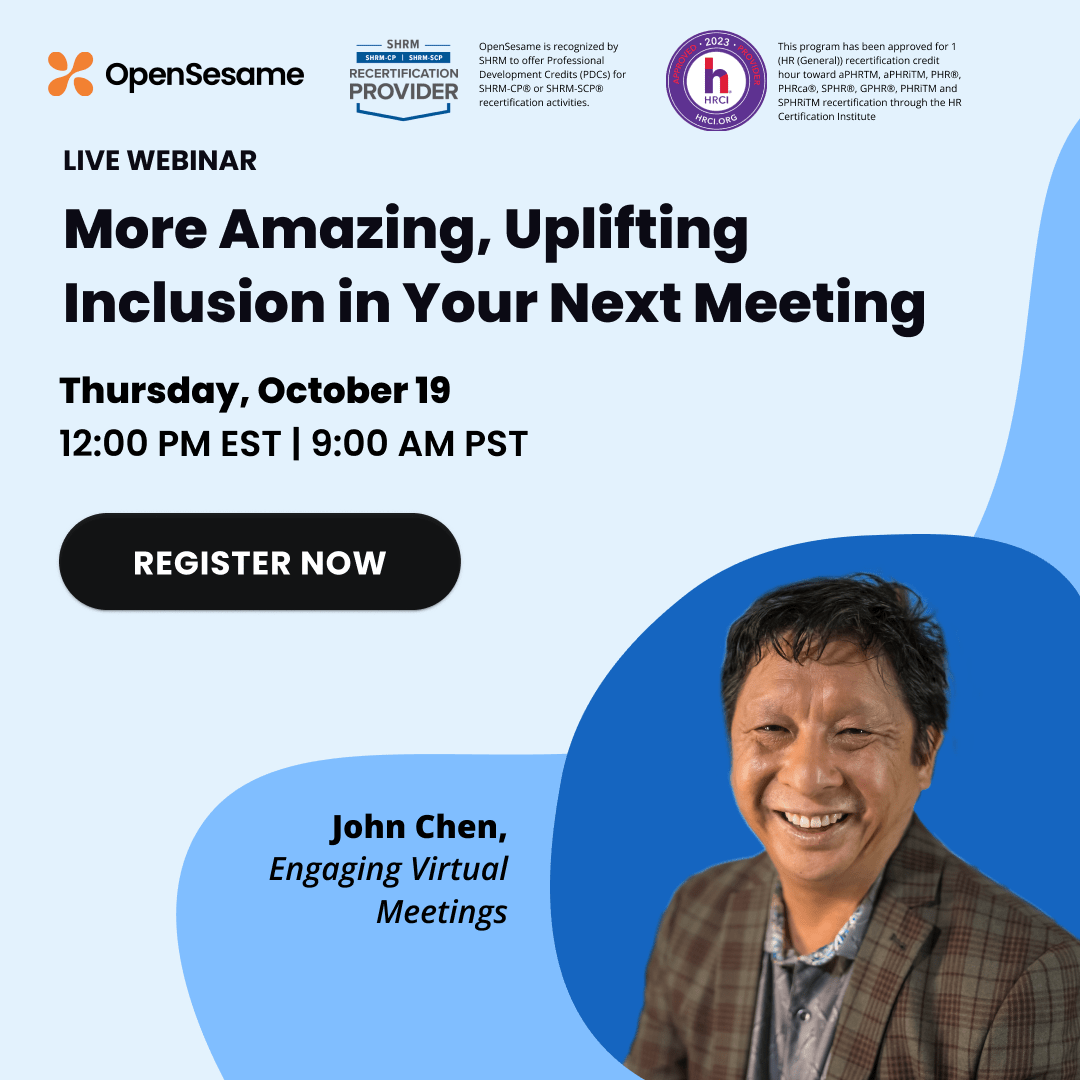Your Global Workforce Needs Accessible, Inclusive Training
Let’s admit it: For most of us, poor learning environments are an all-too-familiar experience in our careers. We each have our own not-so-fond memories of monotonous, disconnected online trainings. Ones where the takeaway was regret over productive time lost instead of useful knowledge gained.
That’s not how learning should work. Which is why, at OpenSesame, we’re doing everything we can to eliminate those experiences entirely. Instead, we want to empower L&D teams everywhere to deliver relevant, effective, captivating courses to each and every one of their learners. And this starts with providing training that is inclusive for an internationally diverse workforce.
Inclusive training is impactful training
The working world is more globally connected than ever. English may be the international common denominator of languages for conducting business, but that doesn’t make it the language of choice for all individual workers. For many, English is not their native language.
But still, business training is predominantly available in only English today. That’s a problem. It increases the friction between a learner and the content they’re trying to absorb. It makes it harder to connect with the material. Ultimately, it leads to less success.
If organizations want to create a true culture of learning, where employees feel training opportunities are helpful and relevant, they’ll need to ensure the content they provide is inclusive and accessible to everyone. When they succeed, the results will speak for themselves.
In addition to being crucial for meeting compliance and accessibility standards, inclusive training is directly tied to enhanced learning outcomes: Giving learners access to training materials in their preferred languages increases comprehension and retention.
It also fosters higher levels of employee engagement, helping individuals see their unique learning needs and preferences factored into their professional development plan. And when employees feel supported and included in the learning process, they develop a sense of belonging and value within their organization. This, in turn, positively impacts their overall job satisfaction.
So, clearly, accessible and inclusive training doesn’t just benefit individual employees—it has a significant impact on overall organizational performance, too. Taking it seriously is an investment not just in a company’s people, but in its whole future.
Simon: course creation for a global audience
Given the importance of inclusive training—and considering OpenSesame’s vision of a world where everyone can easily access the training they need to advance their purpose—when we recognized a growing need for delivering effective training, we took action. We searched and explored various platforms and technologies, but we couldn’t find a solution that provided the reach and inclusivity that met our standards, so we decided to build our own.
Meet Simon, the simple solution that empowers anyone to create beautiful, engaging learning content, complete with videos, photos, narration, knowledge checks, surveys, and quizzes throughout. Even better, Simon lets you quickly translate your course’s text, audio, and video into multiple languages with machine or human powered translations.
We’re incredibly excited about the doors this opens for L&D teams. The depth and breadth of the OpenSesame course library covers so many bases for organizations of all kinds in terms of the training formats and topics their learners need, but there will always be subjects so niche to an organization that the best fit for them doesn’t exist yet. In these instances, learners shouldn’t have to settle for less, but L&D professionals shouldn’t have to shoulder the extra burden of creating high-quality materials on top of all their other obligations, either.
In fact, it shouldn’t be seen as a burden at all—and with Simon, it won’t.
Even without any previous instructional design, you can create engaging, interactive courses thanks to Simon’s modern, intuitive interface. And maintaining your courses is easy, even with multiple languages, as changes made to the original course will automatically update in its translated versions.
See Simon in action
You can sign up for access to Simon through its product page. Or, if you’d like to learn more, check out the recording of our webinar where OpenSesame’s Chief Product Officer and Co-Founder, Josh Blank, and several members of the Simon team showcase the tool in action and share best practices for creating courses. TED@Work’s Director of Product Experiences, Cody Winn, also joined to talk about how they’re using Simon to create hundreds of multilingual TED talks for learners across the globe.
Through testing and early access, we’ve already seen tremendous adoption and success with Simon. Many of our publishers, like TED@Work, Axonify, and ej4 have already been using Simon to translate and publish their courses in our marketplace. And, in terms of course ratings, Simon courses rate higher than courses from other publishing tools.
That’s especially exciting to us, because it underscores what we’ve known all along: By offering courses that are tailored to different languages and abilities, we create an environment where all employees can fully participate and thrive.





